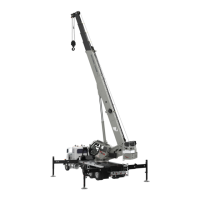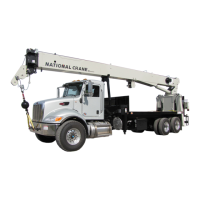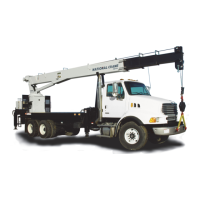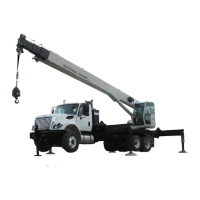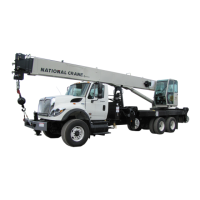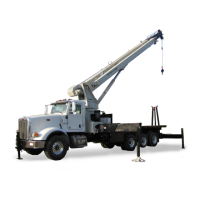CONTROLS AND OPERATING PROCEDURES OPERATOR MANUAL NTC55
3-18 Published 9-26-2018 Control # 646-02
Equipment Checks
Prior to placing the unit in operation, do a complete walk-
around visual inspection and look for structural damage,
loose components, leaks, or other conditions that requires
immediate correction for safe operation. The following
checklist of items are suggested to ensure the crane is
prepared for performing work operations. Check:
• For any unusual conditions such as pools of hydraulic
fluid or lubricating oil under the chassis, any outrigger
which may have crept down or up and any signs of
damage or improper maintenance.
• The tires are inflated to the proper pressure.
• The level of the hydraulic reservoir oil.
• The operation of the “E-stop” and horn circuits.
• For missing and loose bolts.
• For damaged structural members and welds.
• All rope guides and cable keepers.
• All sheaves for free turning.
• The hoist cable for kinks, broken strands or other
damage in accordance with instructions under the
section Hoist Cable Inspection And Maintenance, page
6-3.
• To see that the hydraulic hoses and fittings are in good
condition and show no signs of leaking. The hoses
should be free from cuts and abrasions and there should
be no evidence of binding. Any damage or leakage
should be repaired immediately.
• The RCL and anti-two-block system for proper
operation.
• The electrical wiring connecting the various parts of the
system for physical damage.
NOTE: Consult the truck manufacturer’s manual for
vehicle checks.
Cold Weather Operation
The following recommendations are for operating National
cranes in very low (i.e., sub-zero) temperatures.
Cranes should have appropriate hydraulic oil, lubricants, and
other auxiliary items required for operation in sub-zero
temperatures. Operate individual crane functions to ensure
they are sufficiently warmed prior to performing a lift.
Operation of cranes at full rated capacities in temperatures
between -9°C (15°F) and -40°C (-40°F) or lower should be
accomplished only by competent operators who possess the
skill, experience, and dexterity to ensure smooth operation.
Shock loading shall be avoided.
Operation Below -40°C
For crane operation below -40°C, capacities shall be derated
3.67 percent of the rated load shown on the capacity charts
for each degree below -40°C.
Operation Below -40°F
For crane operation below -40°F, capacities shall be derated
2 percent of the rated load shown on the capacity charts for
each degree below -40°F.
CRANE WARM-UP PROCEDURES
The following procedures detail the actions that must be
taken to properly warm the different crane components
before operating the crane.
NOTE: For temperatures below -9°C (15°F) refer to arctic
lubricants and conditions in the Operator and
Service Manuals.
Before starting the crane, ensure the appropriate lubricants
are used to provide lubrication for the prevailing ambient
temperatures in which the crane will operate in (a list of
lubricants and their temperature ranges can be found in the
Lubrication section of your crane’s Operator Manual, by
contacting your local National Crane distributor, or by
contacting Manitowoc Crane Care directly).
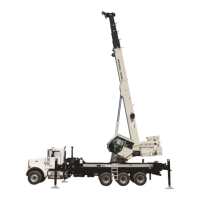
